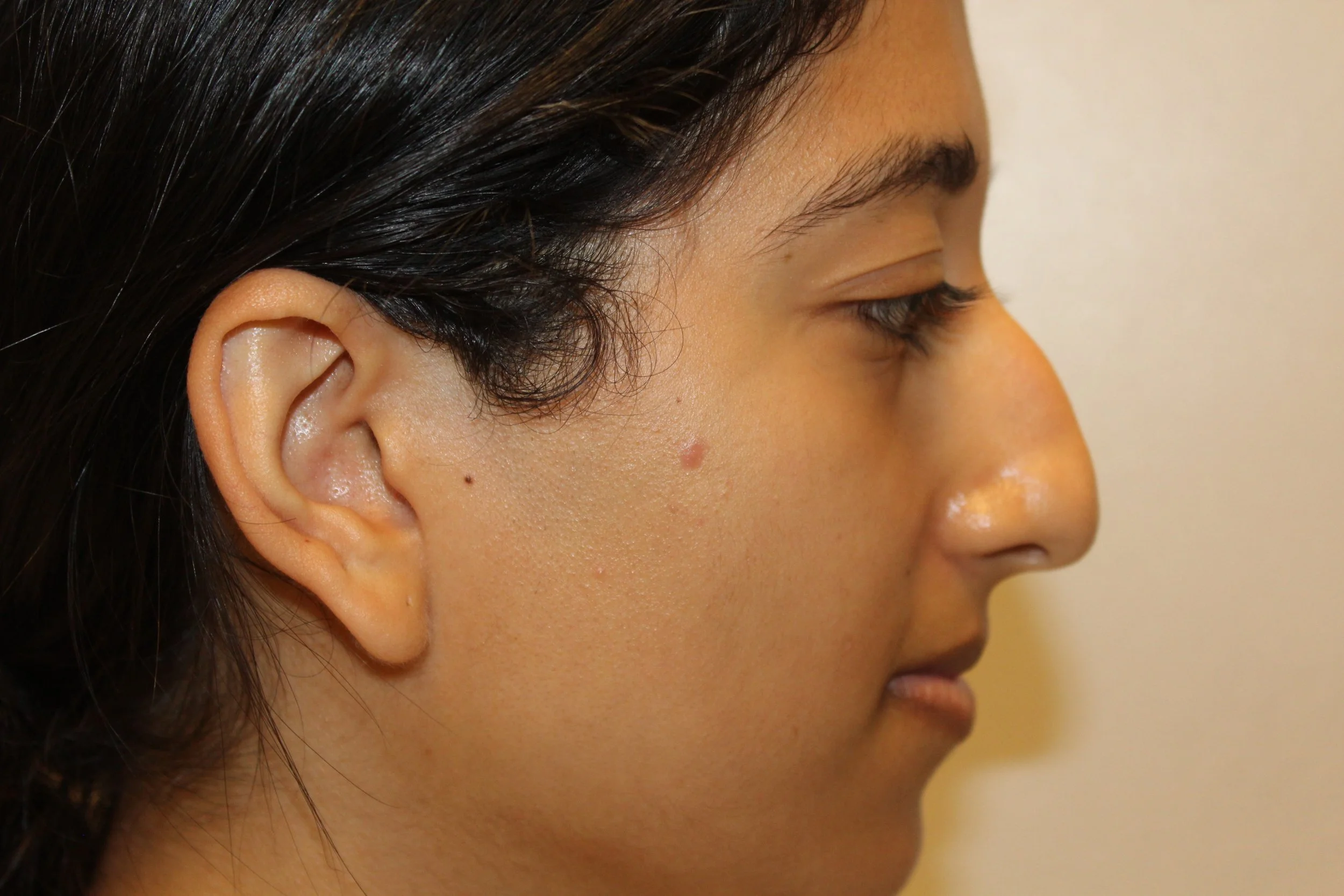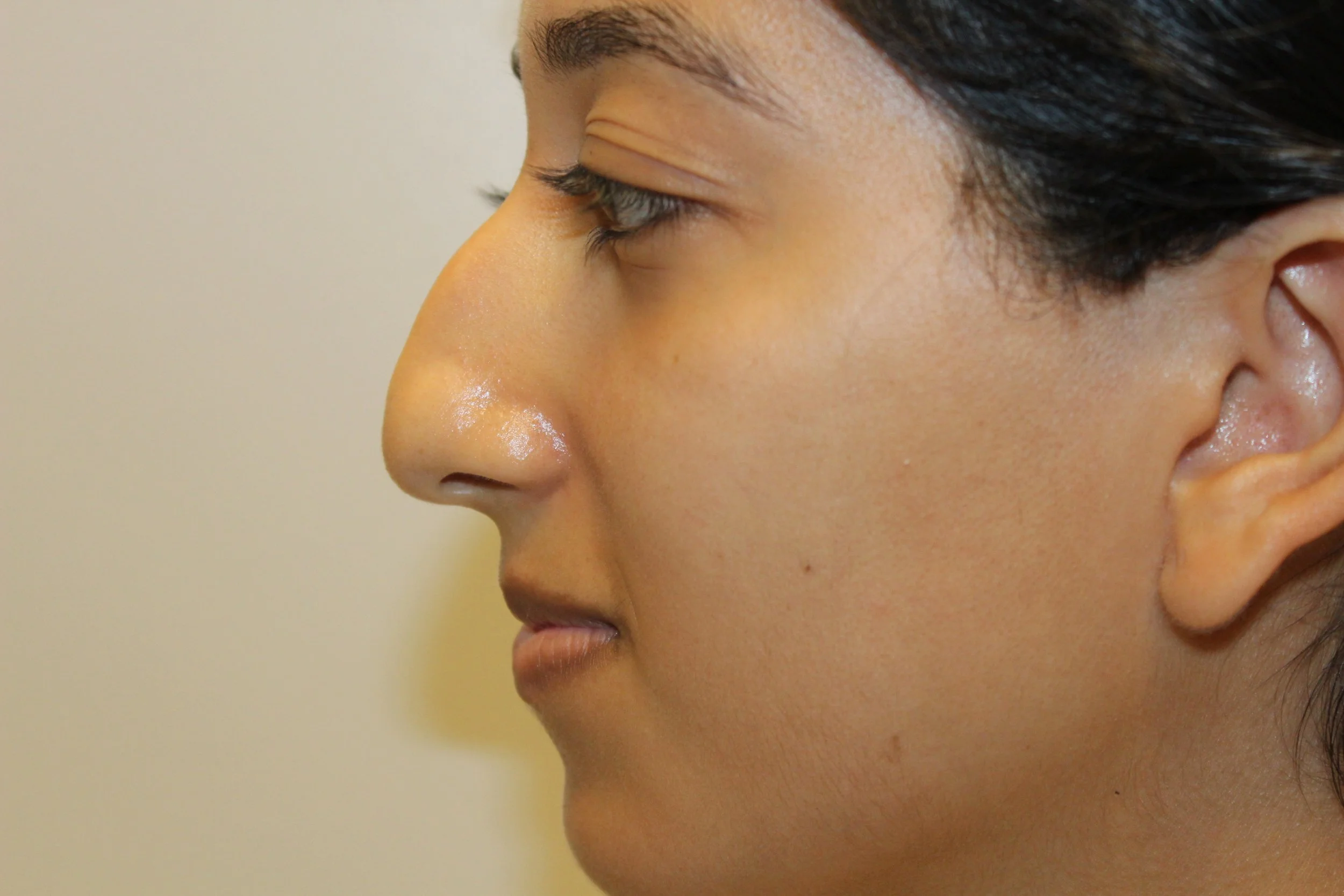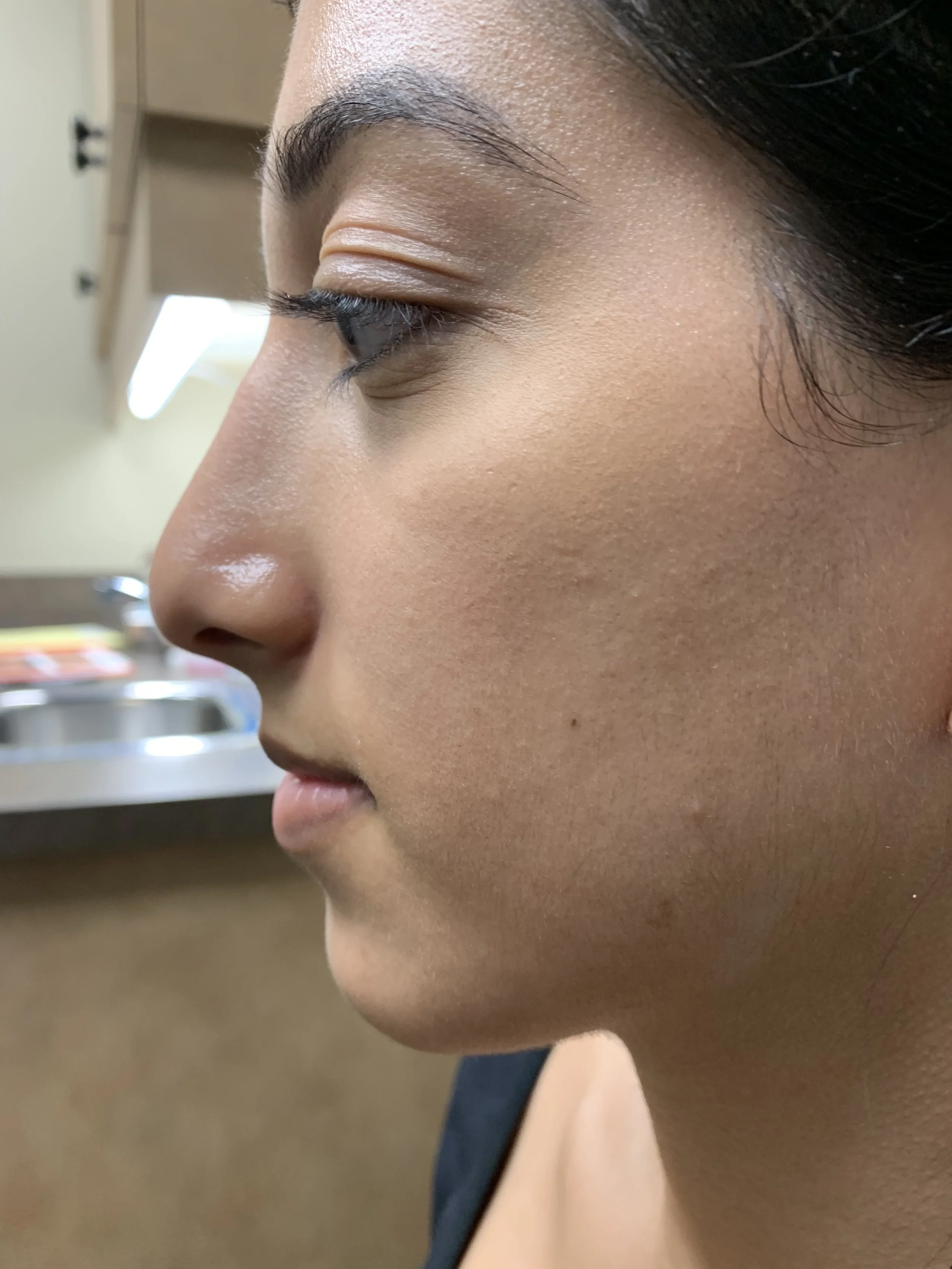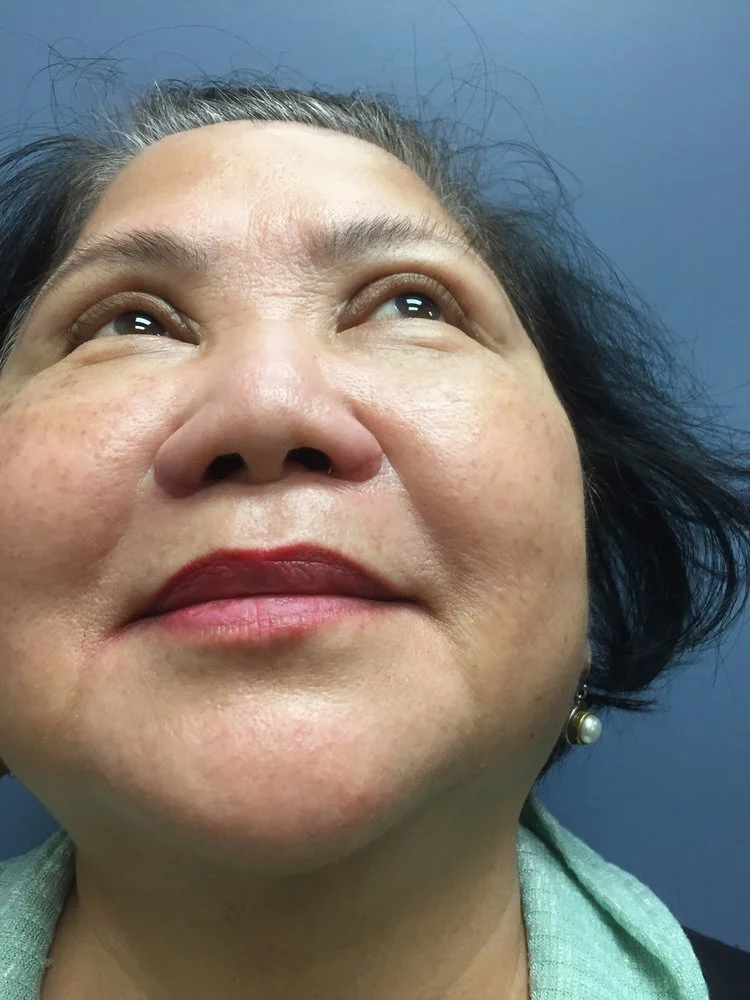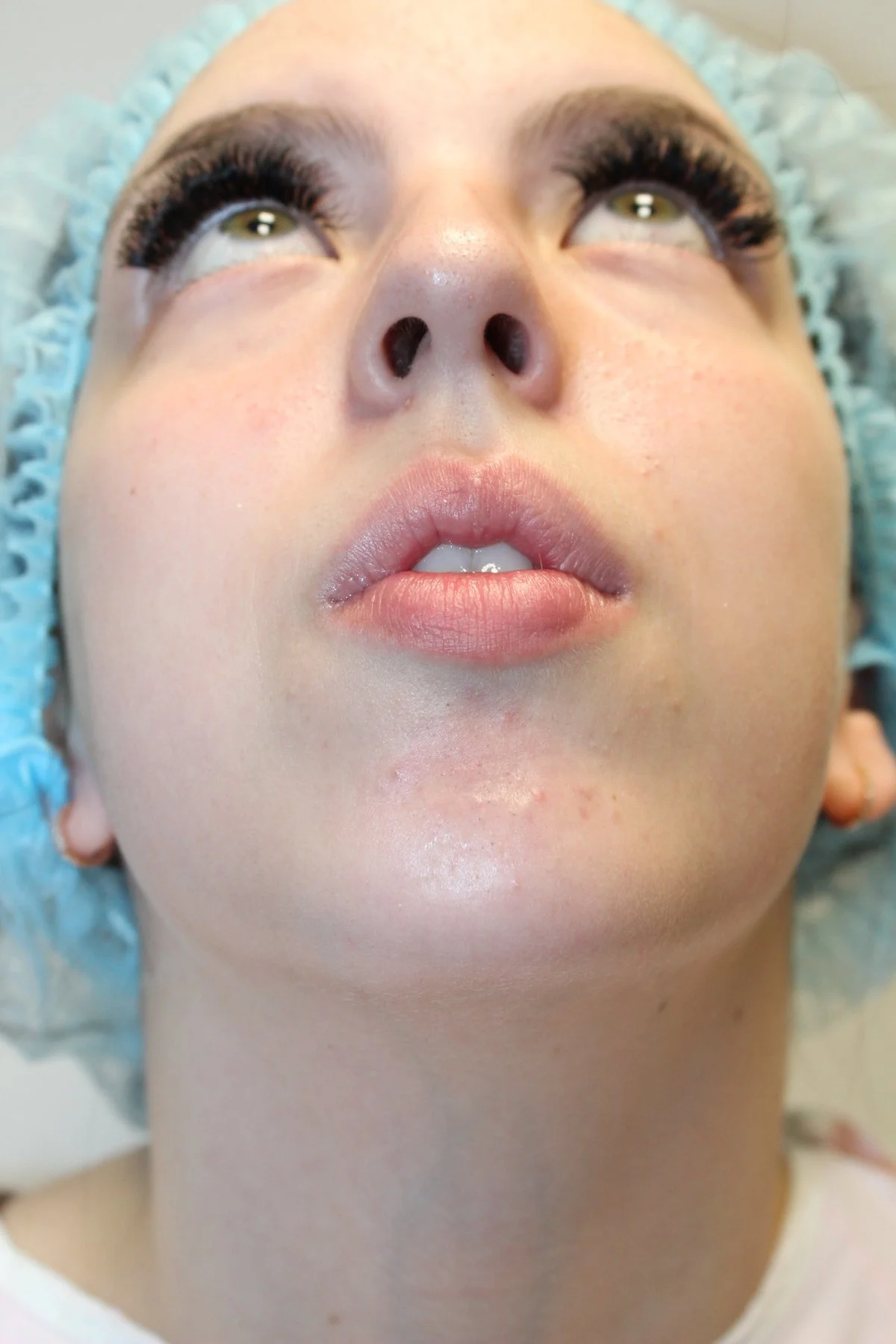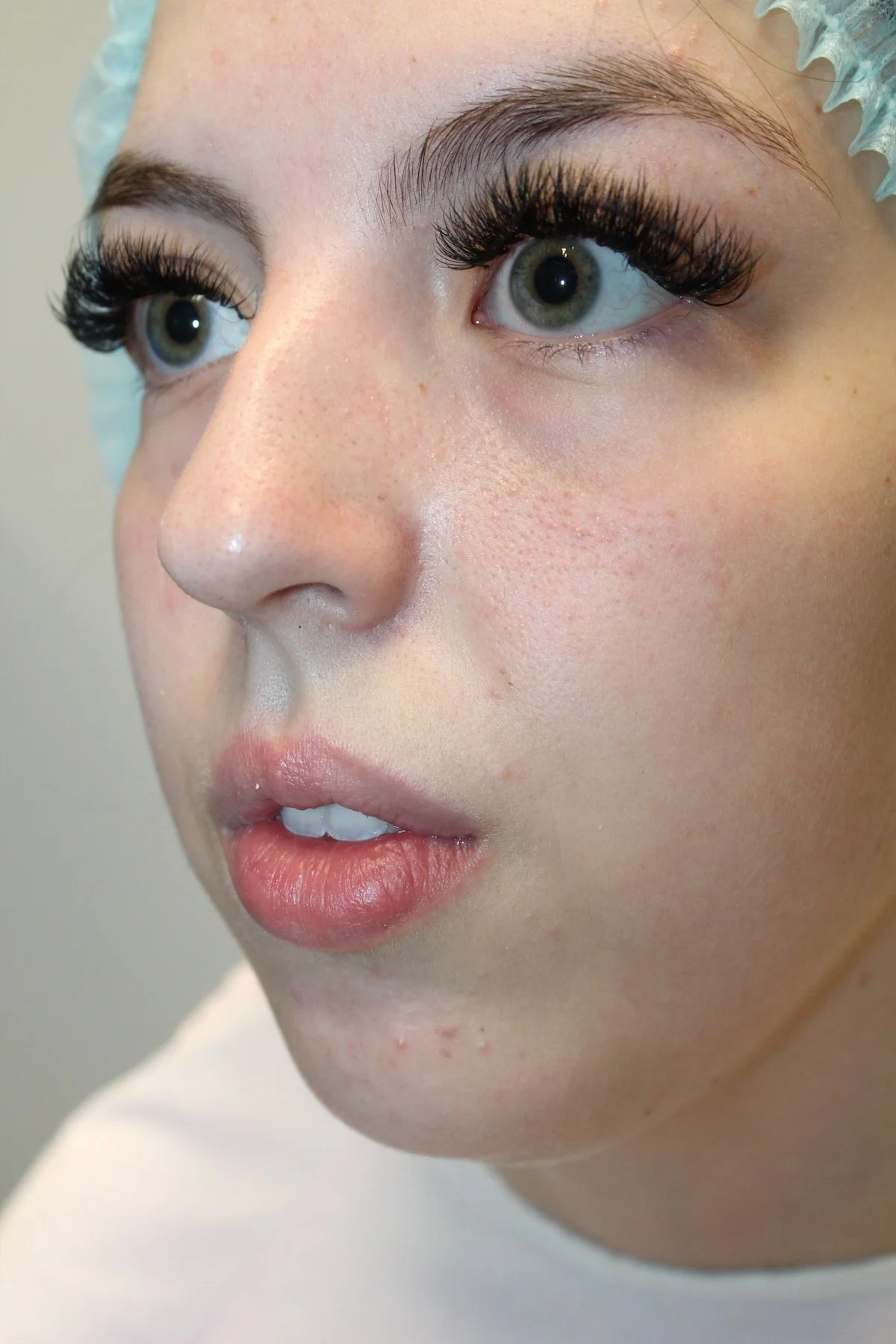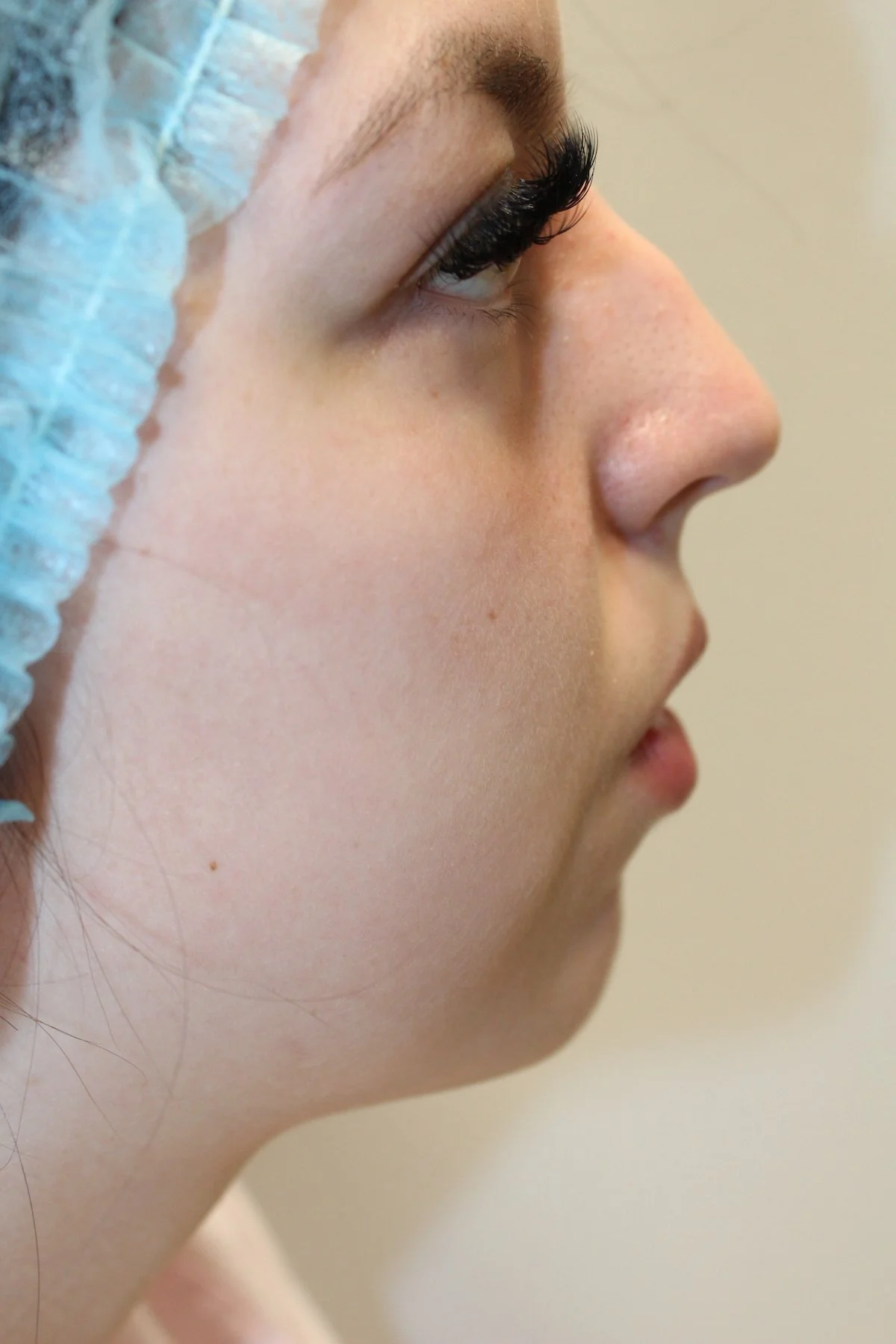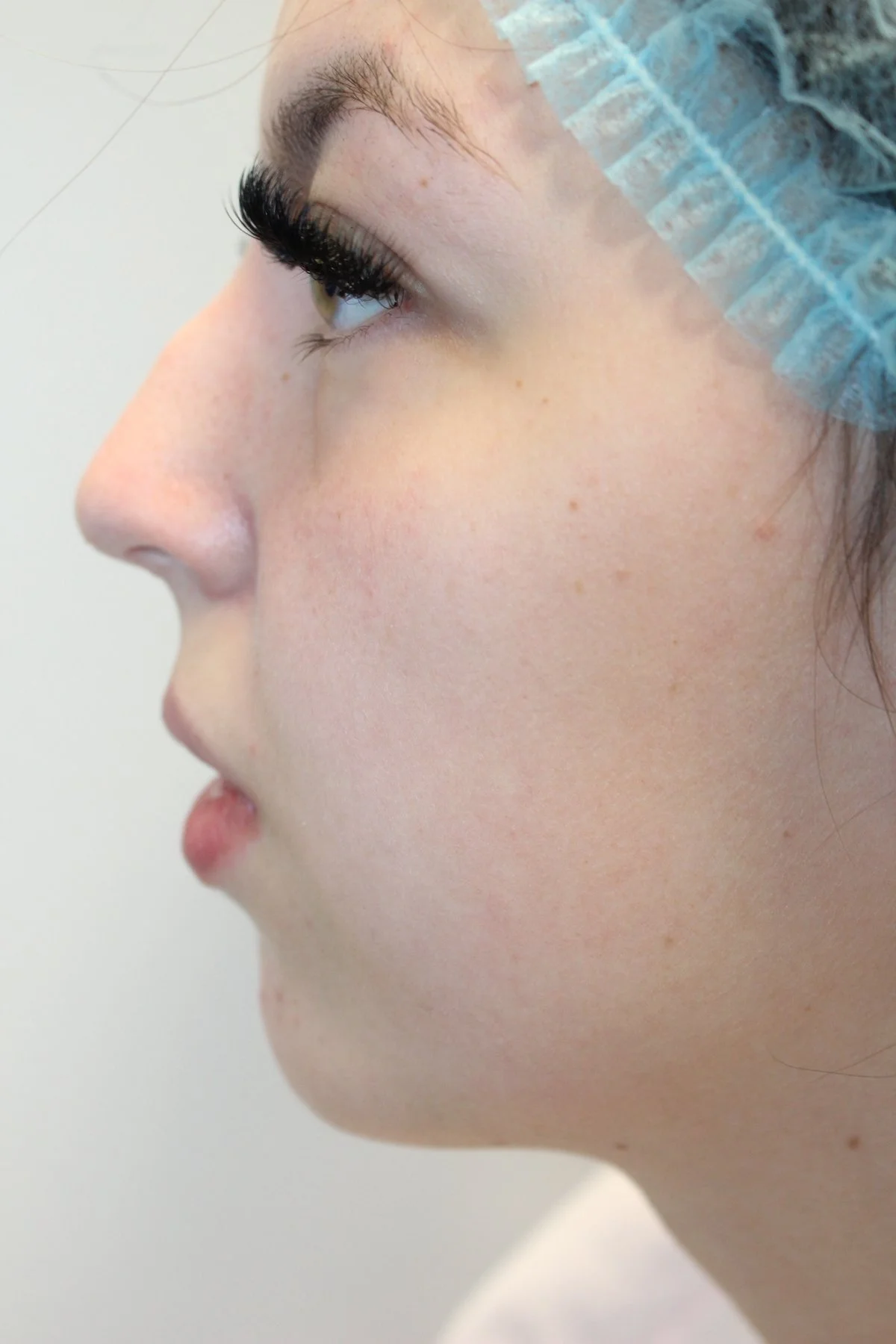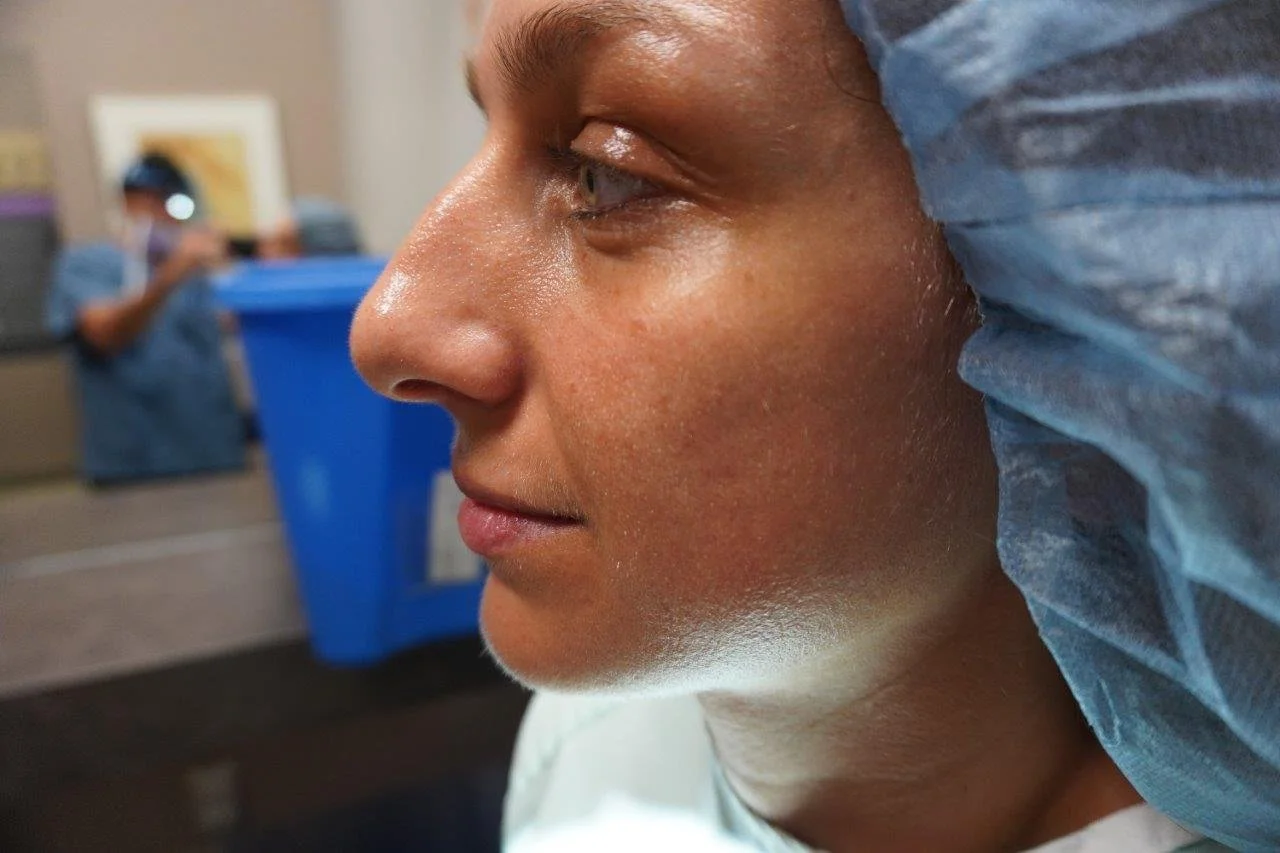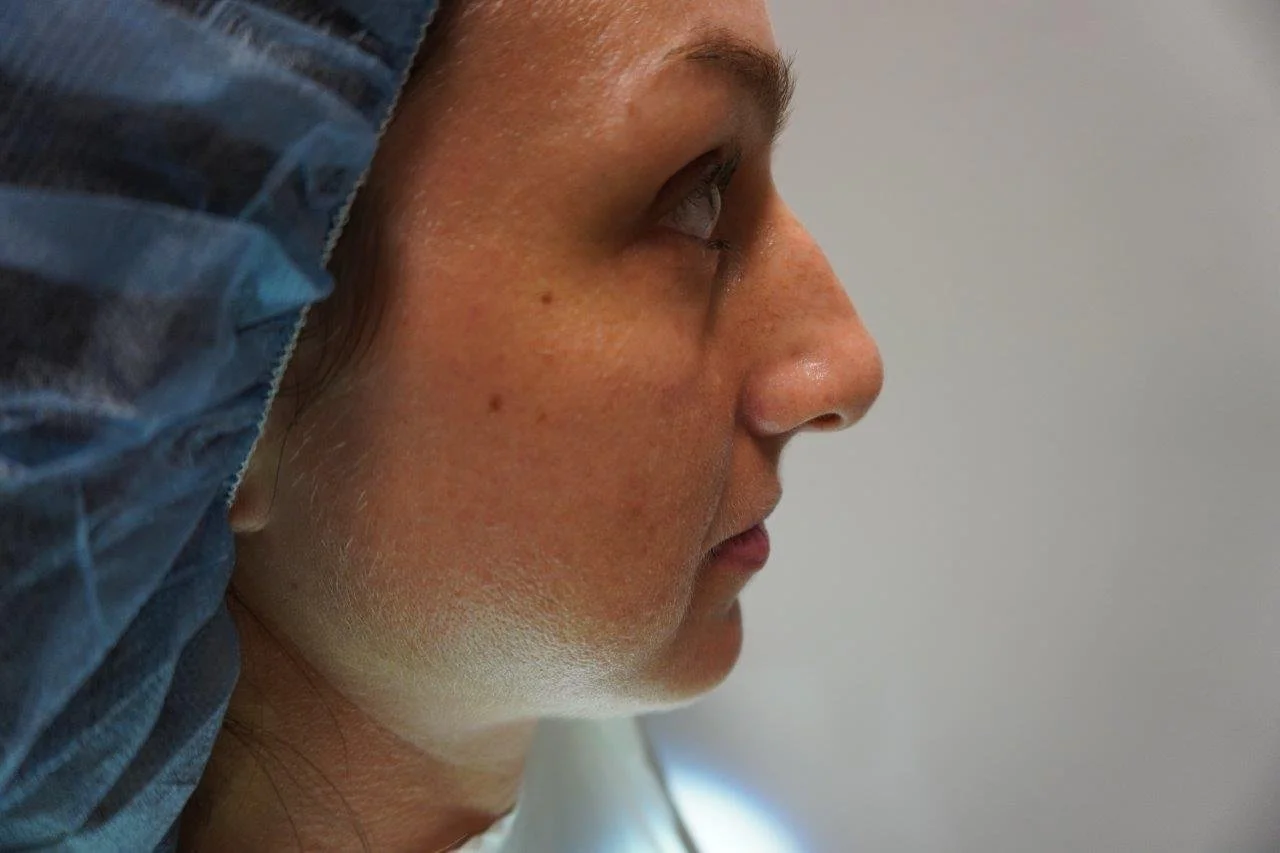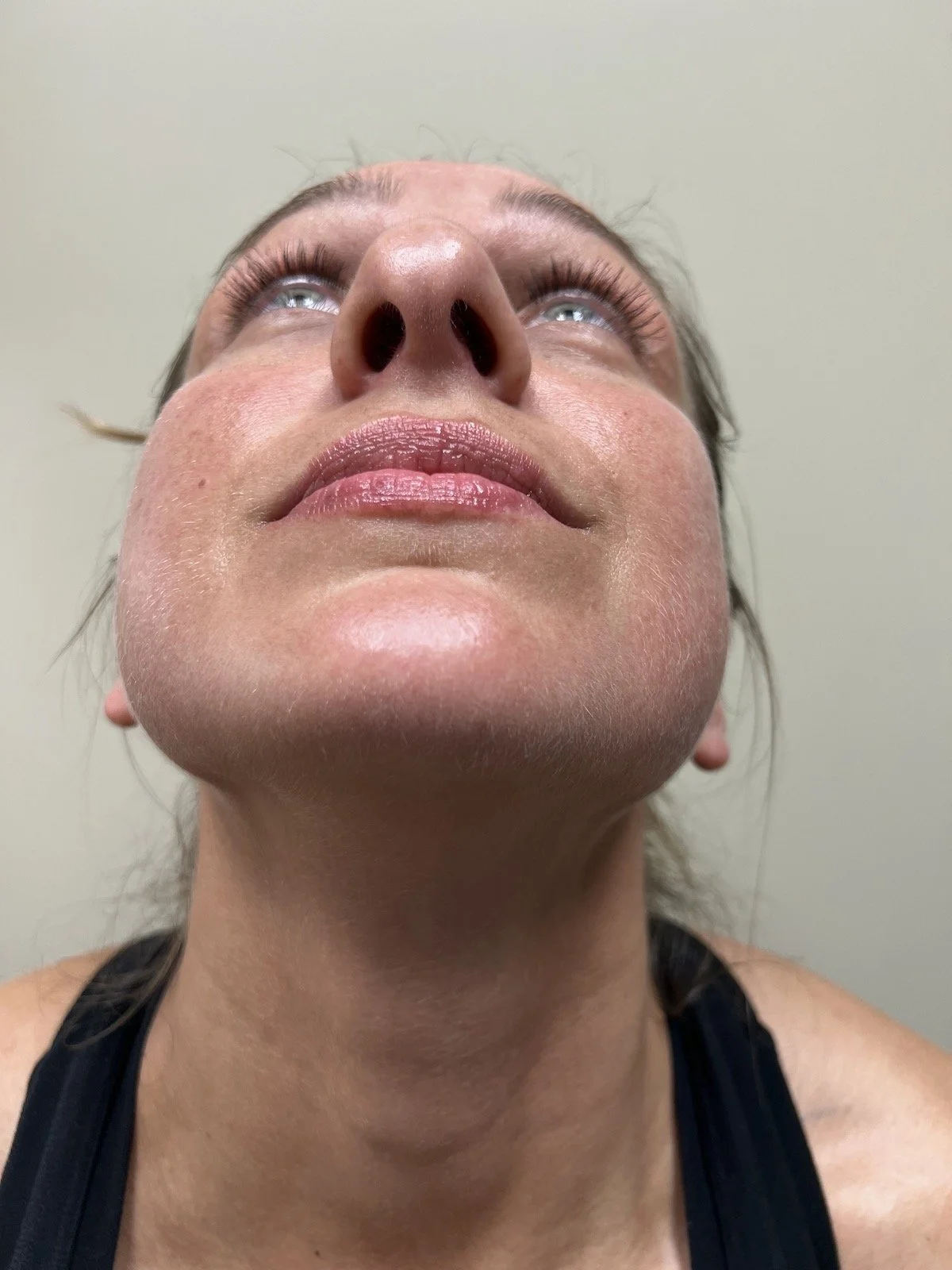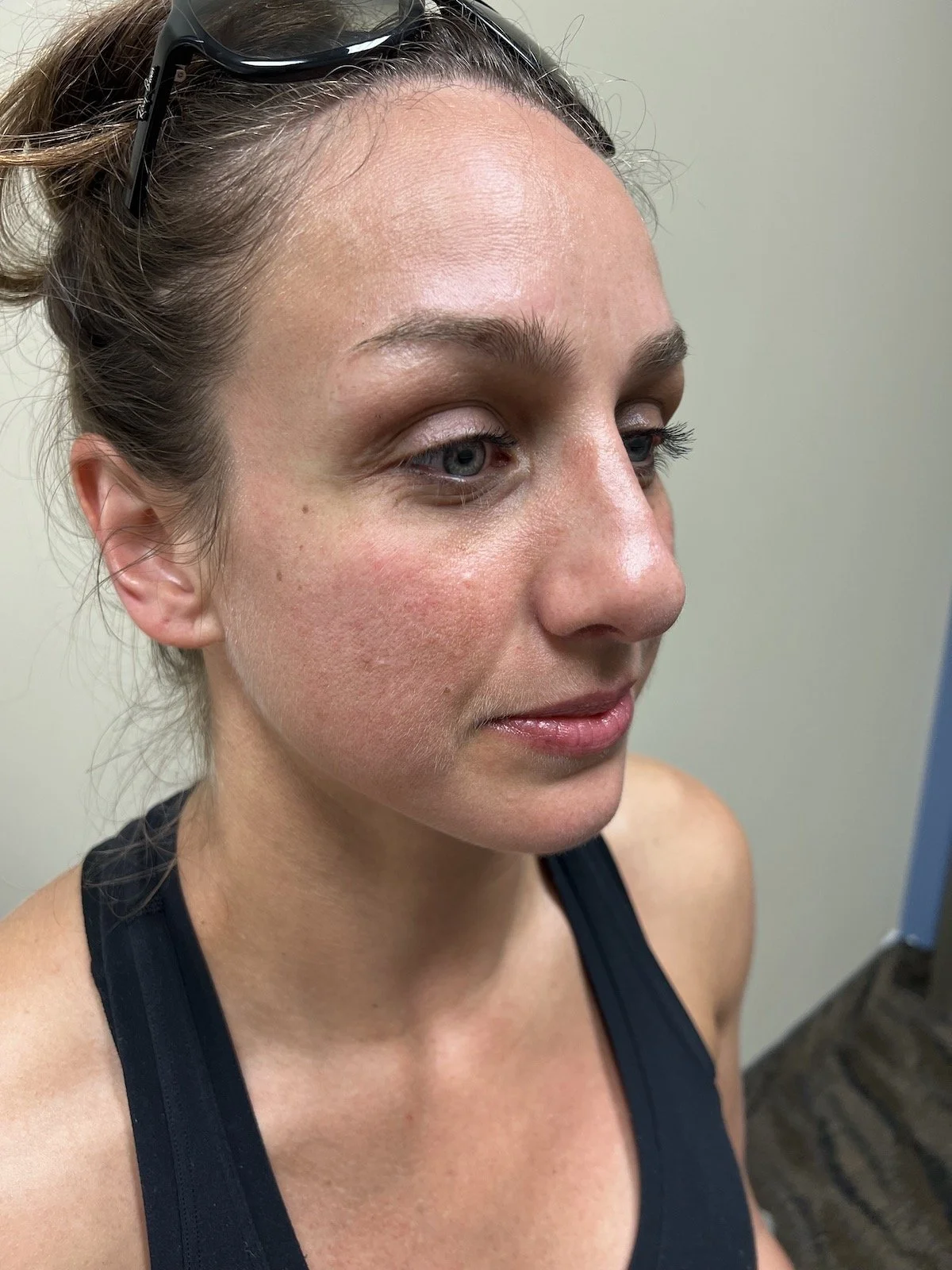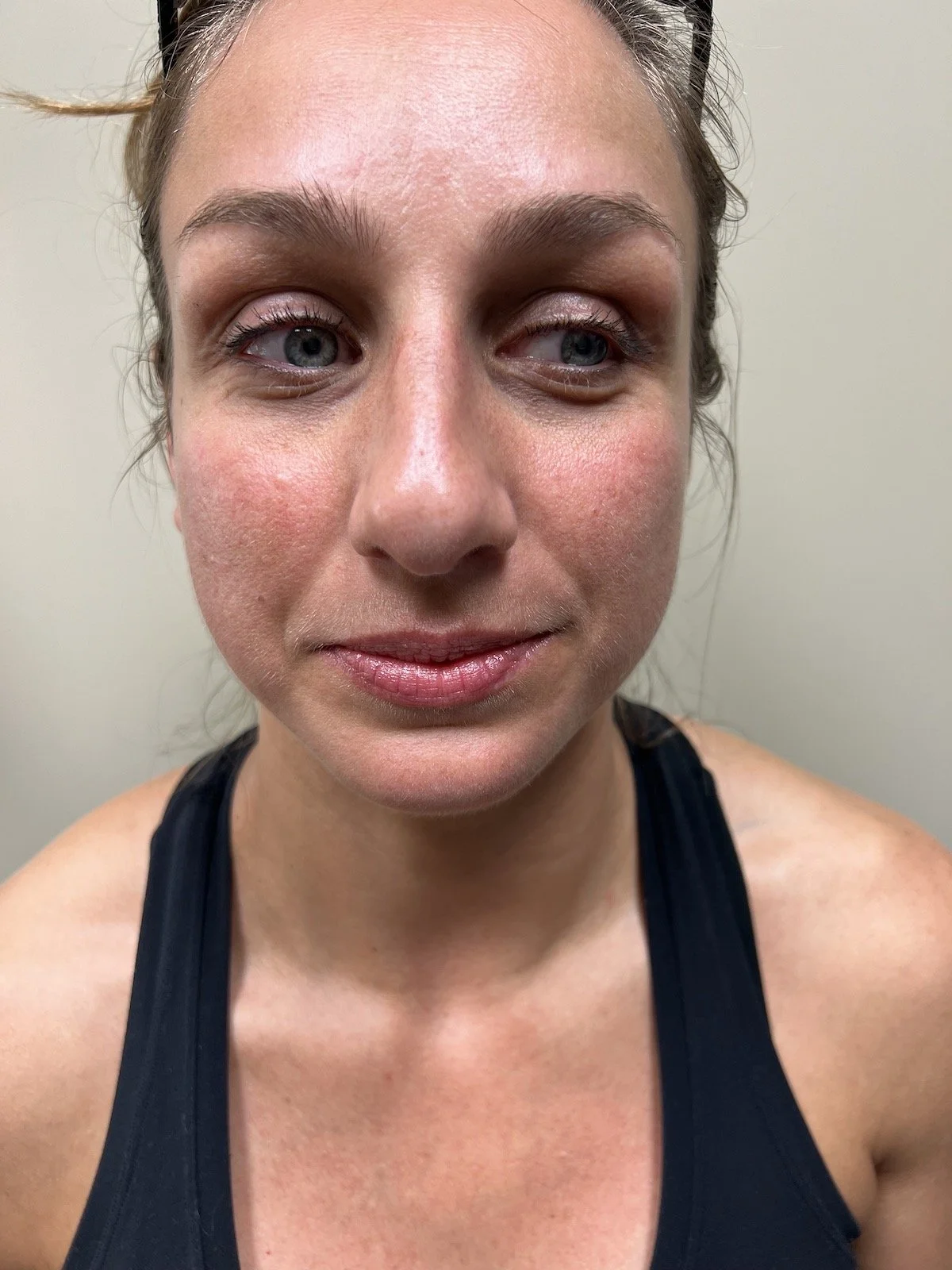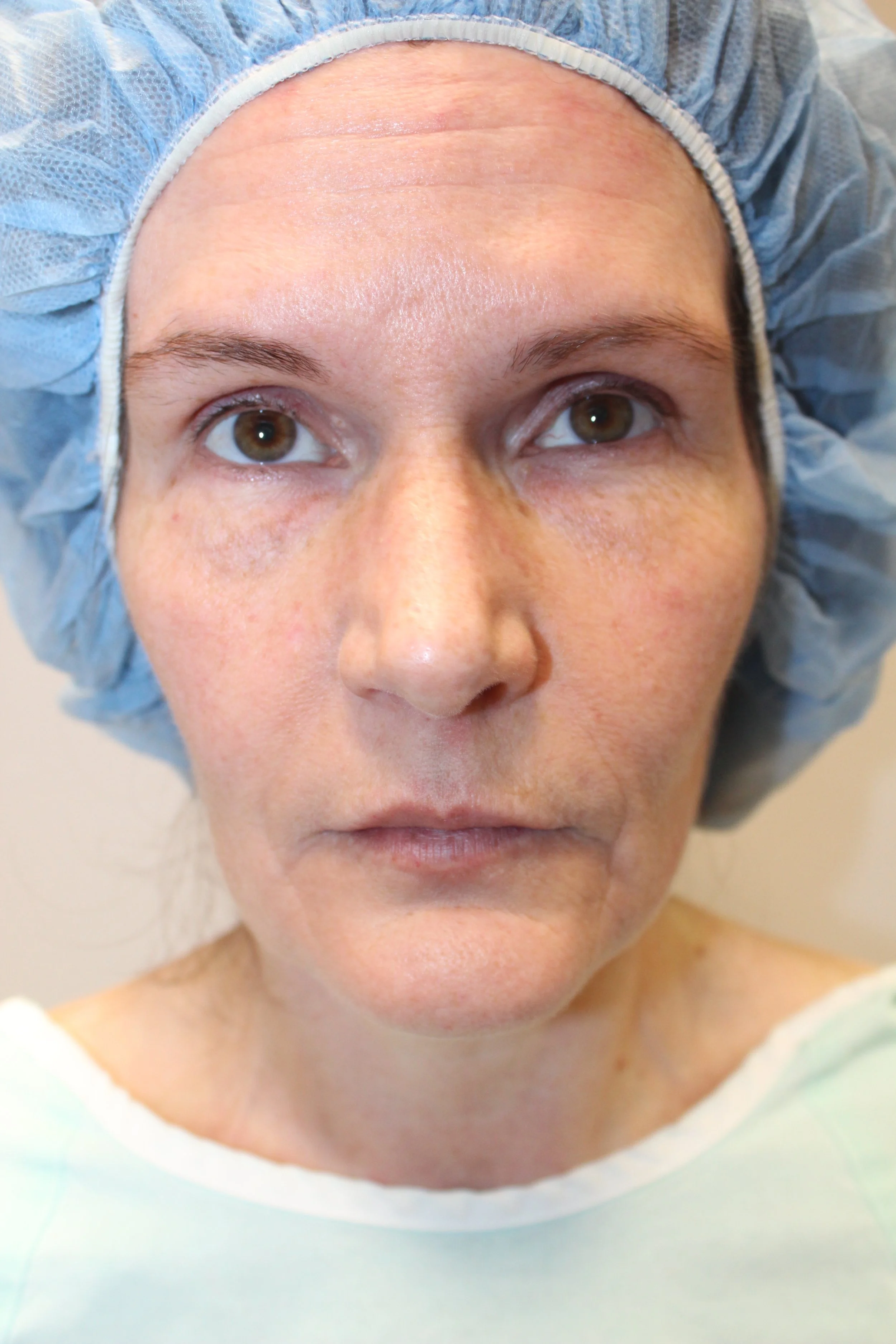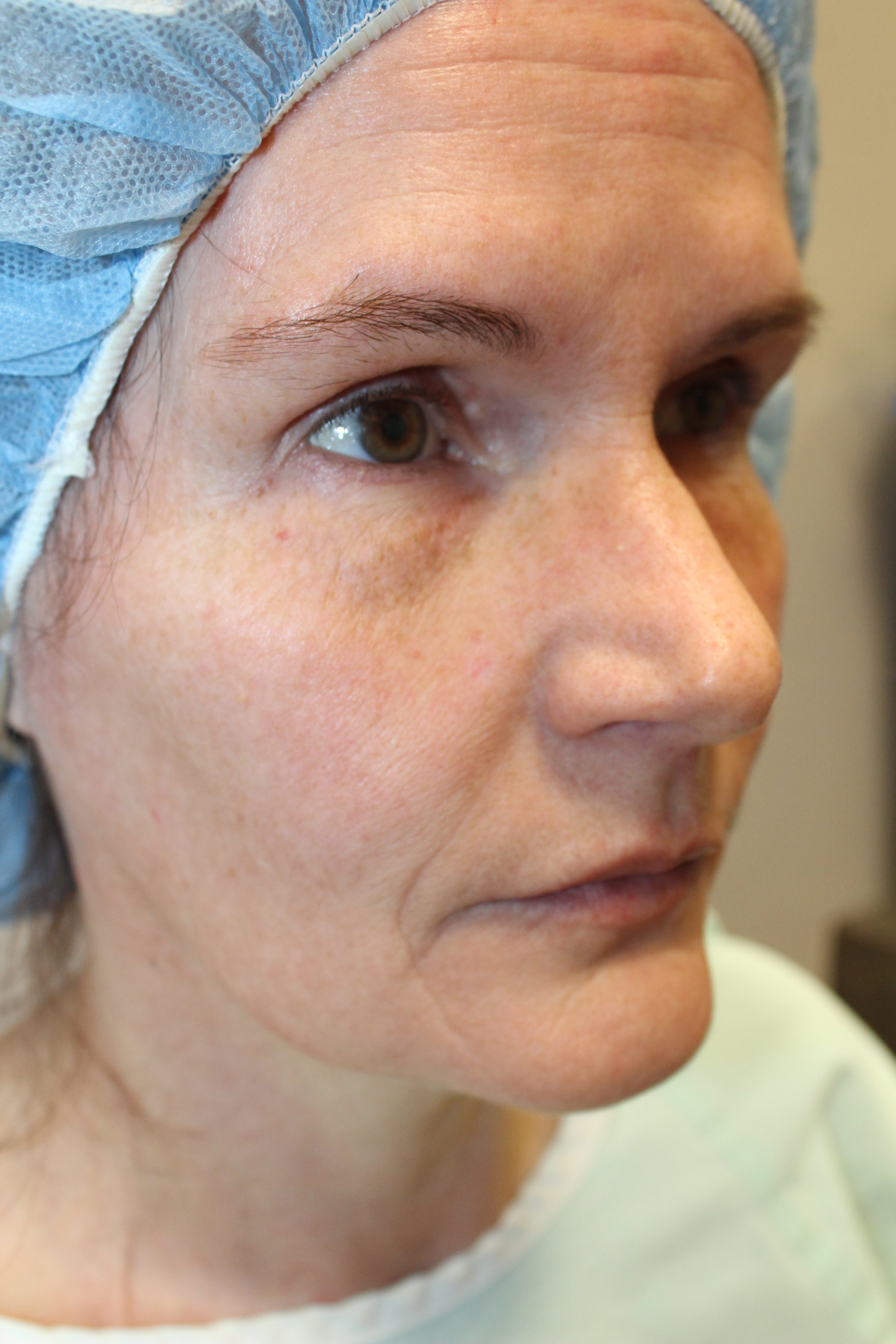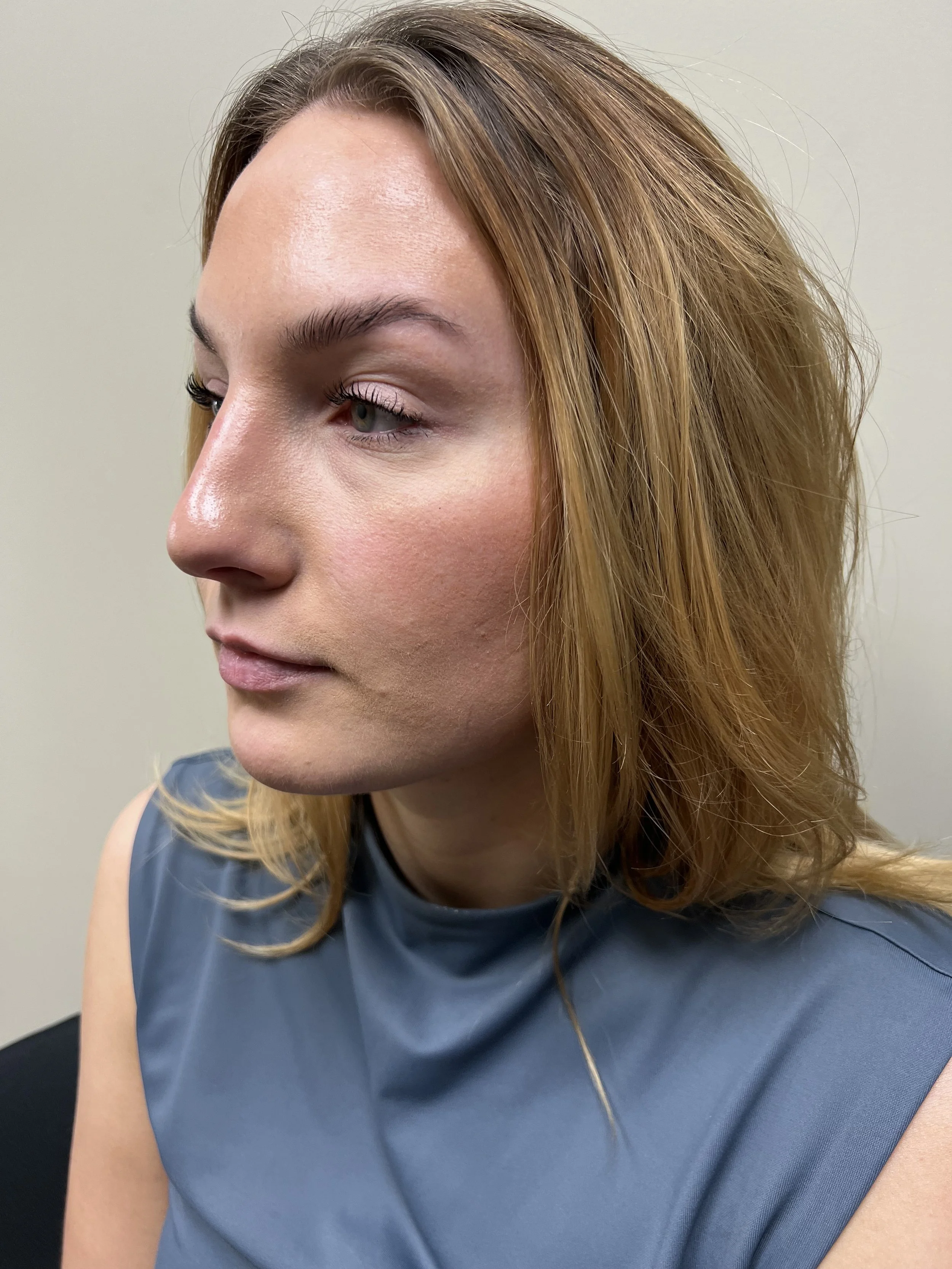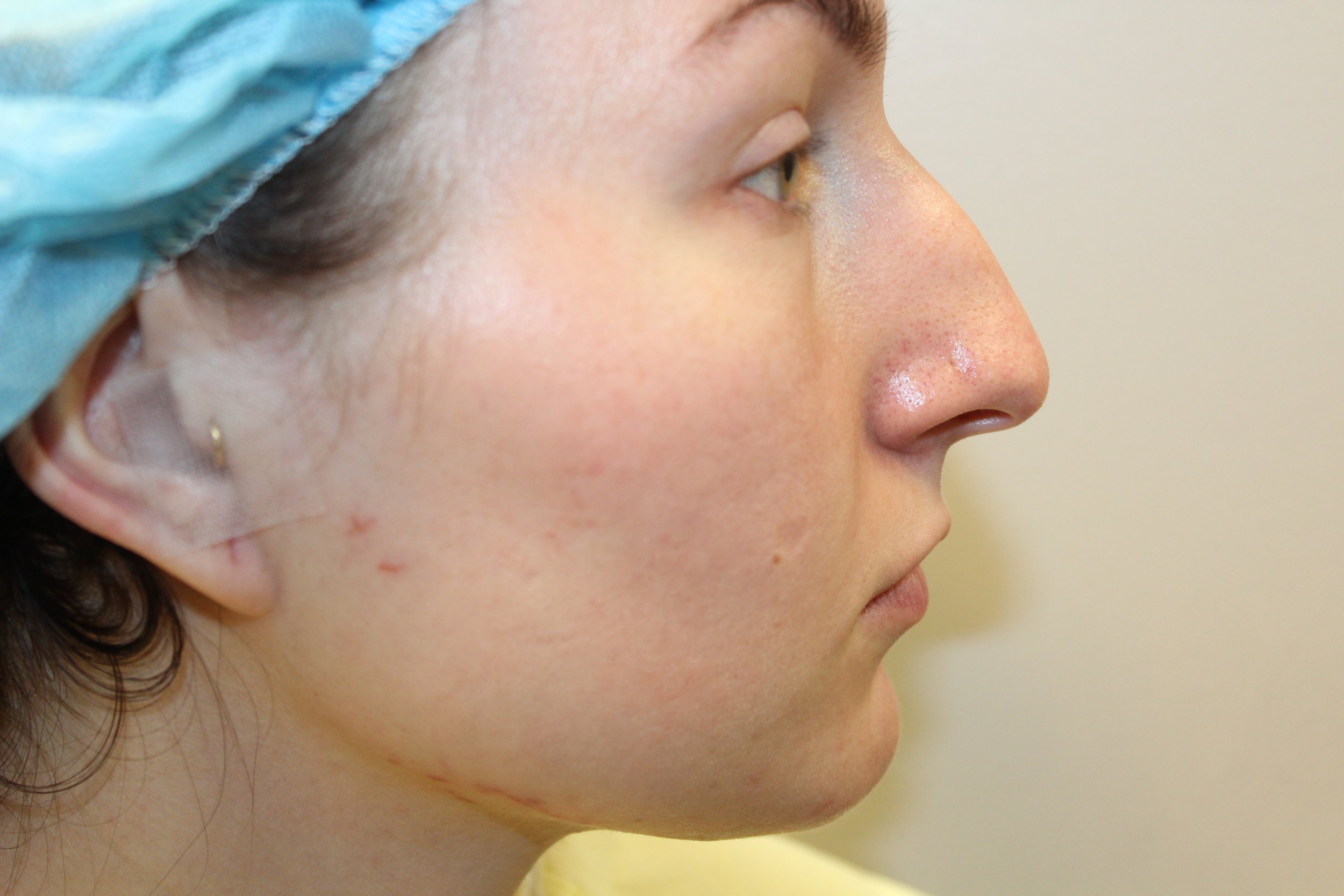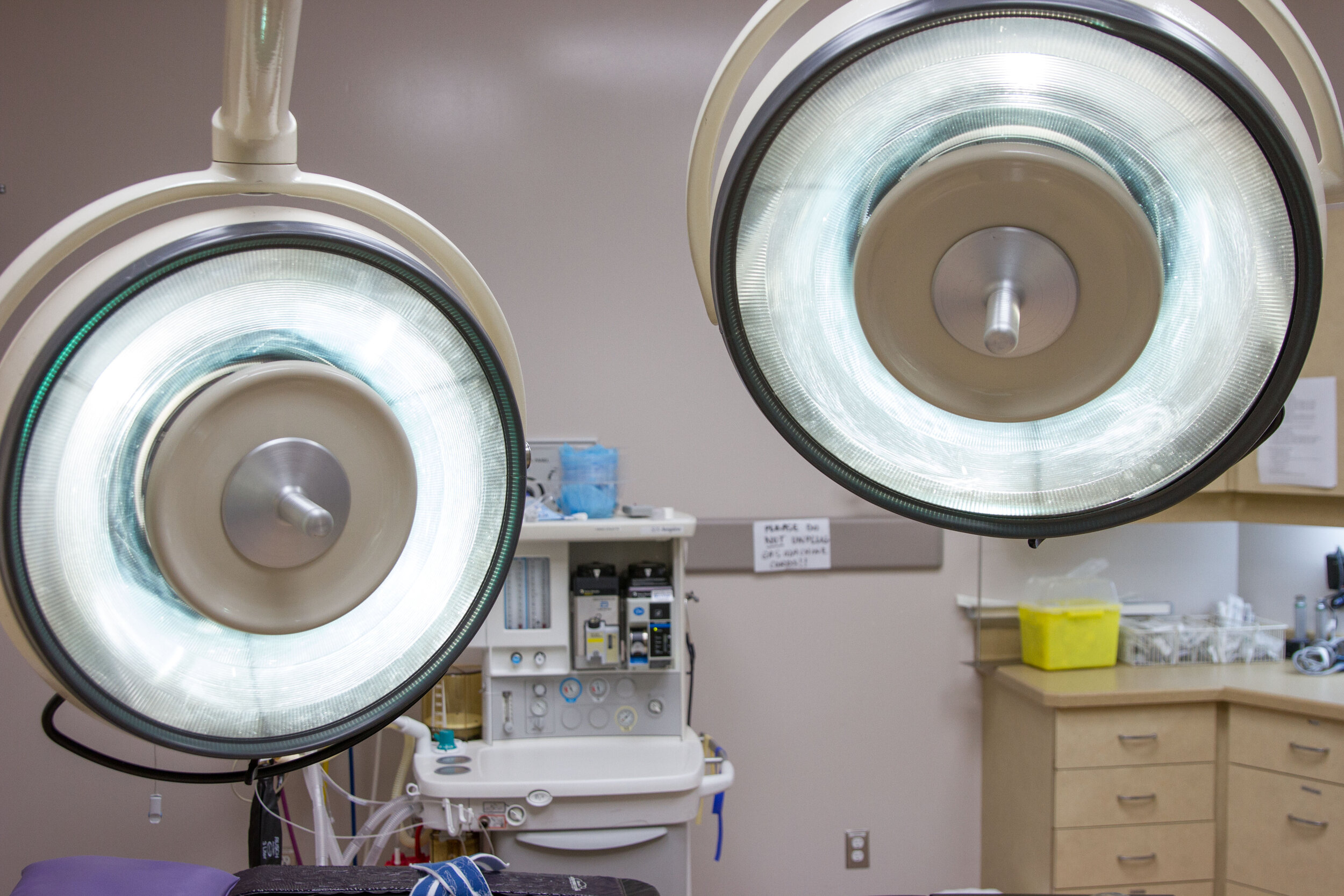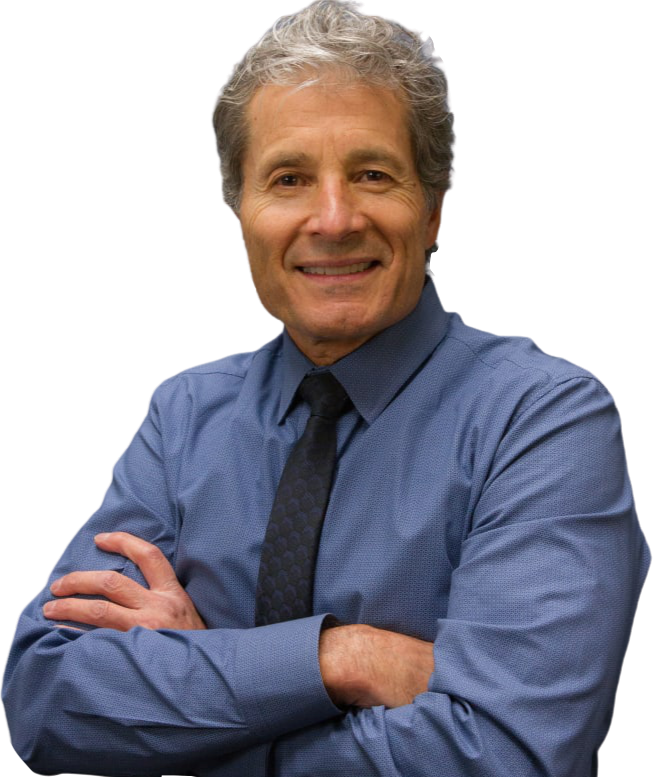
Rhinoplasty
*DISCLAIMER: THIS SITE CONTAINS GRAPHIC & SURGICAL IMAGES THAT MAY BE DISTURBING TO SOME VIEWERS.
THIS SITE IS INTENDED FOR INDIVIDUALS OVER THE AGE OF 18.
**None of the images on this site have been enhanced or photoshopped.
Patient C - 6 week post-operative rhinoplasty
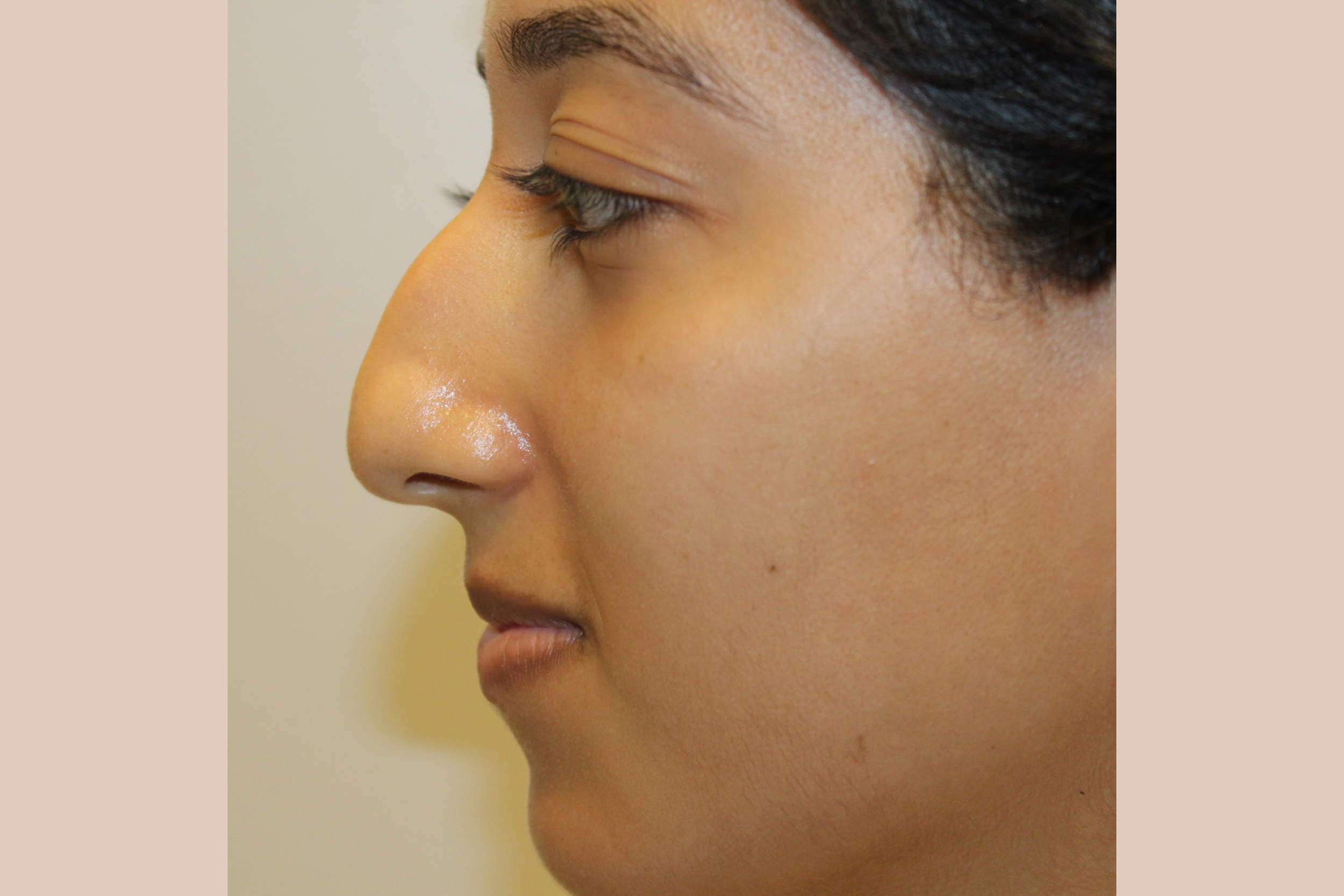
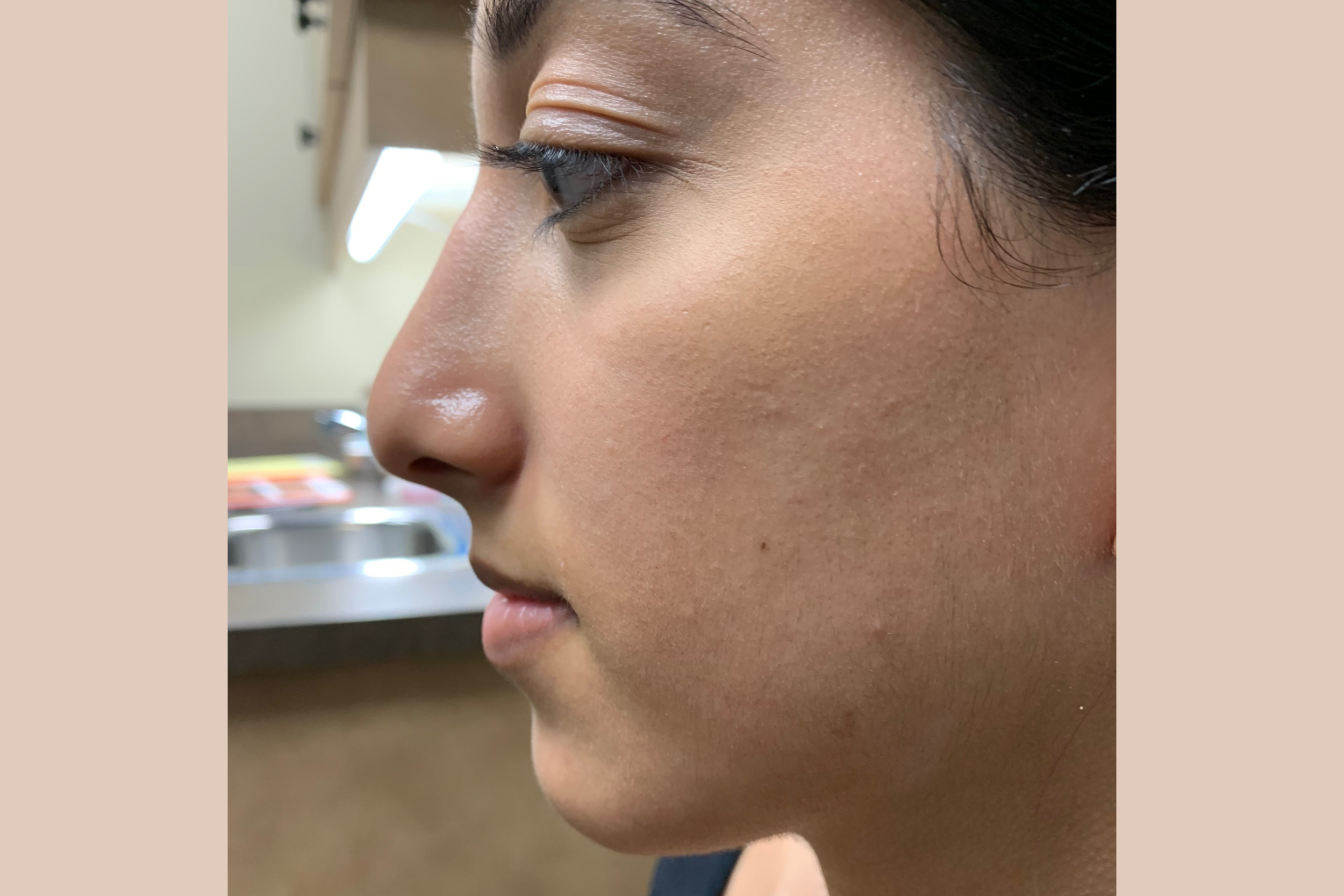
Before & After Photos
*Tap a patient image to enlarge & view the full series of pre and post-operative images.
Before the Surgery:
+ I don’t like the appearance of my nose. What are my options?
The operation to improve the appearance of the nose is called a RHINOPLASTY.
Individual noses have many shapes and sizes.
People have their own personal perception of what they think is an attractive nose. This is influenced by their race and colour, culture, family, friends and where they live. Therefore, there is no perfect nose.
Each individual seeking a cosmetic improvement to the appearance of the nose will have specific things they want corrected.
During the Rhinoplasty consultation with your surgeon, it is very important that the surgeon understands the specific changes to the nasal appearance the patient desires. Some changes are not achievable surgically, while others are.
An unsatisfactory result may occur if this patient/surgeon understandings are not clear.
+ What types of Rhinoplasty are there?
If the nose is too big, a REDUCTION Rhinoplasty is done. This involves reducing and removing a small amount of bone and cartilage under the skin of the nose to create the desired shape and size change. Some large noses may also have very thick skin. The bone and cartilage of the nose can be adjusted but the thickness of the skin cannot be reduced with surgery or any other means.
If the nose is too small, or short, or flat, an AUGMENTATION Rhinoplasty is done. This involves adding bone graft and/or cartilage graft to the nose. In some parts of the world, the use of silicone implants may be used to augment the nose rather than bone or cartilage grafts.
+ What is the difference between an OPEN Rhinoplasty and a CLOSED Rhinoplasty?
An OPEN Rhinoplasty involves making an incision at the base of the nose and inside the nostrils of the nose. The skin of the nose is gently elevated to expose the cartilage and bone which give the nose its shape. Surgical maneuvers to the bone and cartilage are done to create the desired effect. The incisions are then closed with sutures. A permanent scar is left at the base of the nose (columella).
A CLOSED Rhinoplasty involves making incisions only in the inside of the nostrils of the nose. The bone and cartilage are adjusted to create the desired effect. The incisions within the nostril area are closed with dissolving sutures. There is no external scar.
+ What kind of anesthetic is used with a Rhinoplasty?
If there is the need for a bone reduction and a nasal bone fracture or grafting, the procedure is most often done under a General Anaesthetic.
If there is only soft tissue work that is being done, then a local anaesthetic with intravenous sedation is an option.
+ What changes can be made to the nose with Rhinoplasty surgery?
Profile changes can be achieved with surgery.
The nasal hump and tip projection angles can be adjusted.
The angle between the forehead and nose (radix) and the angle between the upper lip and the nose (columella) can be adjusted. These angles are different for men and women.
The length of the nose can be adjusted.
The frontal view of the nose can be changed with surgery.
The width of the nasal tip and the upper bony part of the nose can be adjusted.
The width of the nostrils can also be adjusted.
A crooked nose can be straightened (during the consultation with Dr. Giuffre, the symmetry of the patients face will always be assessed: some patients have facial asymmetry with one side of the face longer than the other, therefore their nose sits on a slightly crooked facial platform).
Patients with a recessed chin, (Please see FAQ Chin) will have a nose that appears larger due to the short chin. The results of the Rhinoplasty procedure will be improved with a correction of the recessed chin.
Patients with thick heavy skin over their nose will not achieve the same result as patients with thinner skin over the nose.
+ What is the goal of Rhinoplasty surgery?
The upper and lower part of the nose, in the profile view, and the frontal view, should be balanced.
The angles should be balanced.
The nose should be balanced within the patient’s face, (a small petite nose in a large man’s face is poor balance).
The surgical result should have a natural non-operated appearance.
+ What if I have difficulty breathing through my nose?
There are a number of reasons that a patient can have difficulty breathing through their nose.
An isolated nasal breathing issue without a nasal appearance issue is best assessed and treated by an Ear Nose and Throat surgeon.
If the patient wants the appearance of the nose improved (Rhinoplasty) and also has nasal airway obstruction, this can be corrected at the same time as the Rhinoplasty surgery. This is called an SMR (submucosa resection) Rhinoplasty (nasal appearance change) which is done by Plastic Surgeons.
This may involve straightening the nasal septum, (the septum divides the right and left side of the nose) and reducing the size of the internal air warmers within the nose (inferior turbinates). This surgery is done within the nose. There is no external scarring.
This nasal obstruction surgery does not change the appearance of the nose.
The Operation:
+ How is the procedure done?
A photograph of the face is taken the morning of surgery.
The surgical plan is again reviewed with the patient at this time.
The surgery is done either under General Anaesthesia or Local anesthesia with intravenous sedation.
The appropriate incisions are made (depending on whether an Open or Closed Rhinoplasty is being done).
The adjustment to bone and cartilage and nostrils is done as planned.
The incisions are closed with dissolving sutures.
A cast is applied that remains on for 7 days. It is to be kept dry.
If nasal obstruction corrective surgery is done, vaseline gauze is inserted into the nostrils for 24 hours. This is removed by Dr. Giuffre’s staff the following morning.
At one week after surgery, the cast is removed and replaced with tape by Dr. Giuffre. The tape is worn for one more week.
At the end of the second week, the patient will remove this tape and apply tape to the nose in the evening before bed and remove it in the morning. Dr. Giuffre will instruct the patient on how this is done. This is done for 6 weeks.
At 6 weeks after surgery, the patient returns to the office. The preoperative photos will be given to the patient, and Dr. Giuffre will assess the result with the patient. At this time the nose will still have some swelling and firmness to the tissues.
The patient will return to the office at the one year anniversary of the surgery for a final assessment of the result. It takes a full year for the nose to heal completely following Rhinoplasty surgery. If there are minor surgical adjustments that could be made to improve the result, these would be discussed with the patient. They are done after the one year mark following the Rhinoplasty when healing is complete.
The Risks:
+ What are the risks of doing a Rhinoplasty procedure?
With any surgery there are surgical and anesthetic risks.
Aside from the rare risks of an anesthetic event, some of the general and specific surgical risks for this procedure would include:
Scarring if an open technique is done
Swelling and bruising which can last 7-10 days
Discomfort
Time off work and exercise
Bleeding from the nasal obstruction correction
Contour asymmetry
Extrusion of the implant in an augmentation rhinoplasty using silicone implants (**Please note implant extrusion image below.)
This list is not complete.
**During the consultation with the patient, Dr. Giuffre will outline and explain each of the risks in detail.
The Followup:
+ How often do I need to come back for a checkup after the surgery?
Postoperative visits include:
- 24 hours to remove the nasal packing
- 1 week visit to remove the cast
- 6 week visit to review the early result and photographs
- a one year anniversary visit
If there are any patient concerns, Dr. Giuffre provides his home phone number for patient's direct access.
After the 6 week visit, if there are any future requests for an appointment, they are made directly with Dr. Giuffre office and an expedited visit is arranged.
+ I no longer have access to my original surgeon. What can I do?
For cosmetic or reconstructive concerns, patients are invited to contact Dr. Giuffre's office (780-428-7737) for an appointment.
Dr. Giuffre does not require a referral.
There is no charge for the consultation.
Financing:
+ How much does it cost?
This is considered a cosmetic procedure and is not covered by Alberta Health Services.
The cost of cosmetic surgery is covered entirely by the patient.
The one fee would include:
- the cost of the anesthetist if required (who provides the General Anesthetic)
- the rental of the operating room and equipment
- the staff including the nurses and administration staff
- the surgical fee
The cost will vary depending on the duration of the procedure and the quality and sophistication of the surgical facility where the surgery is performed.
The fees will be discussed at the time of consultation with Dr. Giuffre.
There is no obligation to proceed with surgery following the consultation. The patient is referred to our web sites and is invited back for a second consultation if need be.
Our office will endeavour to expedite a surgical procedure to accommodate both business and family obligations.
All fees are receipted. GST payment is required.
+ Can I finance the costs of the surgery? How do I do this?
Dr. Giuffre does not provide in house financing for cosmetic procedures.
There are a number of companies across Canada that will finance cosmetic surgery not much different than financing a vehicle or mortgages. Please refer to the links provided for this information.
**Dr. Giuffre has no financial or business relationship or affiliation with any of these companies.
+ If something goes wrong, do I have to repay for the operation?
You do not have to pay for the treatment of an immediate complication. In the unusual event that there is a problem with your original surgery, you do not have to pay for the correction.
+ How much does it cost?
The cost of cosmetic surgery is covered entirely by the patient. The one fee would include:
- the cost of the anesthetist (who provides the General Anesthetic)
- the rental of the operating room and equipment
- the rental of the recovery room and equipment
- the staff, including the nurses and administration staff
- the surgical fee
The cost will vary depending on the duration of the procedure and the quality and sophistication of the surgical facility where the surgery is performed.
The fees will be discussed at the time of consultation with Dr. Giuffre.
There is no obligation to proceed with surgery following the consultation. The patient is referred to our websites and is invited back for a second consultation if need be.
Our office will endeavour to expedite a surgical procedure to accommodate both business and family obligations. All fees are receipted. GST payment is required.
+ What about having my Cosmetic Surgery in another country where it is cheaper?
There is a current trend to have surgery out of your country where the surgery may be cheaper.
We call this tourist surgery.
There are a number of additional risks associated with tourist surgery, which include:
The surgical skill, experience, licensing and education of an unknown surgeon.
Canada has very strict rules and requirements to be a licensed Plastic Surgeon (FRCS(C)) in our country. Your Plastic Surgeon has completed an undergraduate degree (4 years), an MD degree (4 years), a Fellowship Degree in Plastic Surgery (5 years) and often a post Fellowship (1-2 years).
A “friend” is not a good reference, nor is glitzy advertising.
The safety, sterility and equipment quality, including anaesthesia machines in the hospital or private surgical suite could be questionable; this may lead to increased risk of infection and anaesthetic risks.
Post operative care is limited to the time you spend in their country.
If you have a complication, to see your original surgeon, you will have to fly back to where your procedure took place, or see a new surgeon in your own Country.
If you have an unsatisfactory result, you will have to fly back to see your original surgeon or find a new Surgeon.
The cost of the repair may exceed what you originally paid, and the final result, fixing a mistake, is often not as good as it could have been had the surgery been done correctly the first time.
After accounting for the accumulated costs of the air travel, hotel, surgery and postoperative care, the perceived cost savings may not be significant.
If you have a severe, life threatening complication, Alberta Health Care will cover the medical costs for your care.
Correcting the reconstructive problem, as a result of the complication, would be the patient’s financial responsibility.
“Life is full of choices; your character reflects those choices.”


